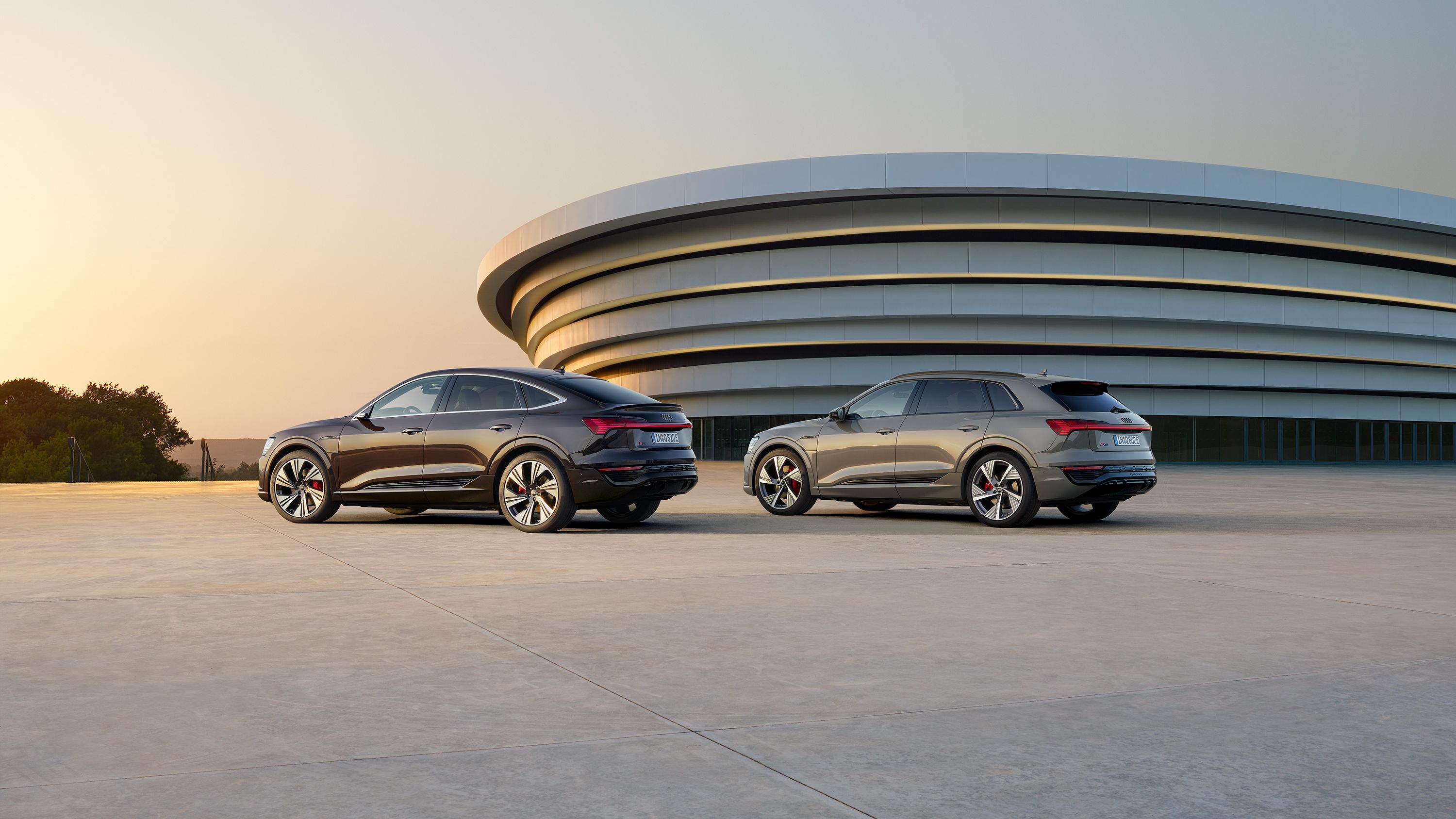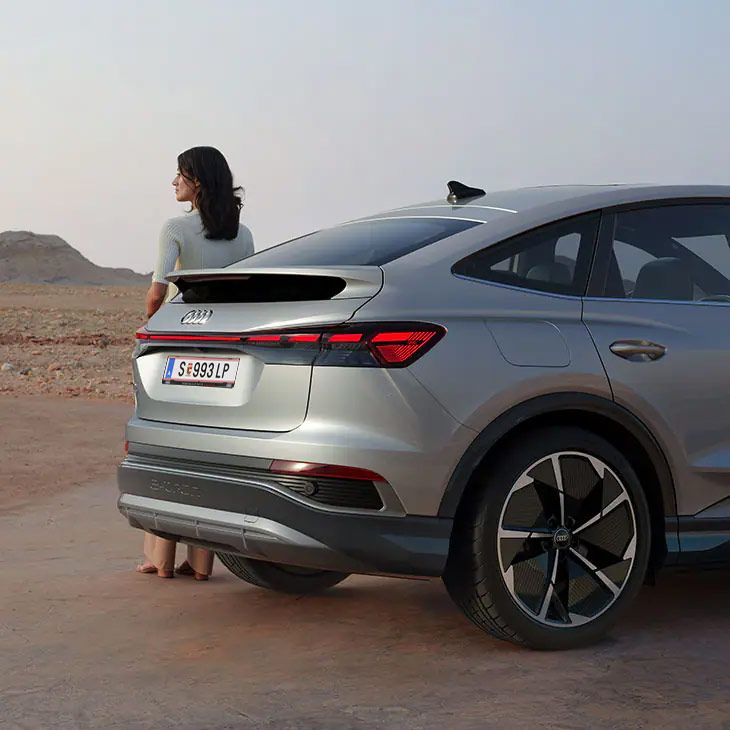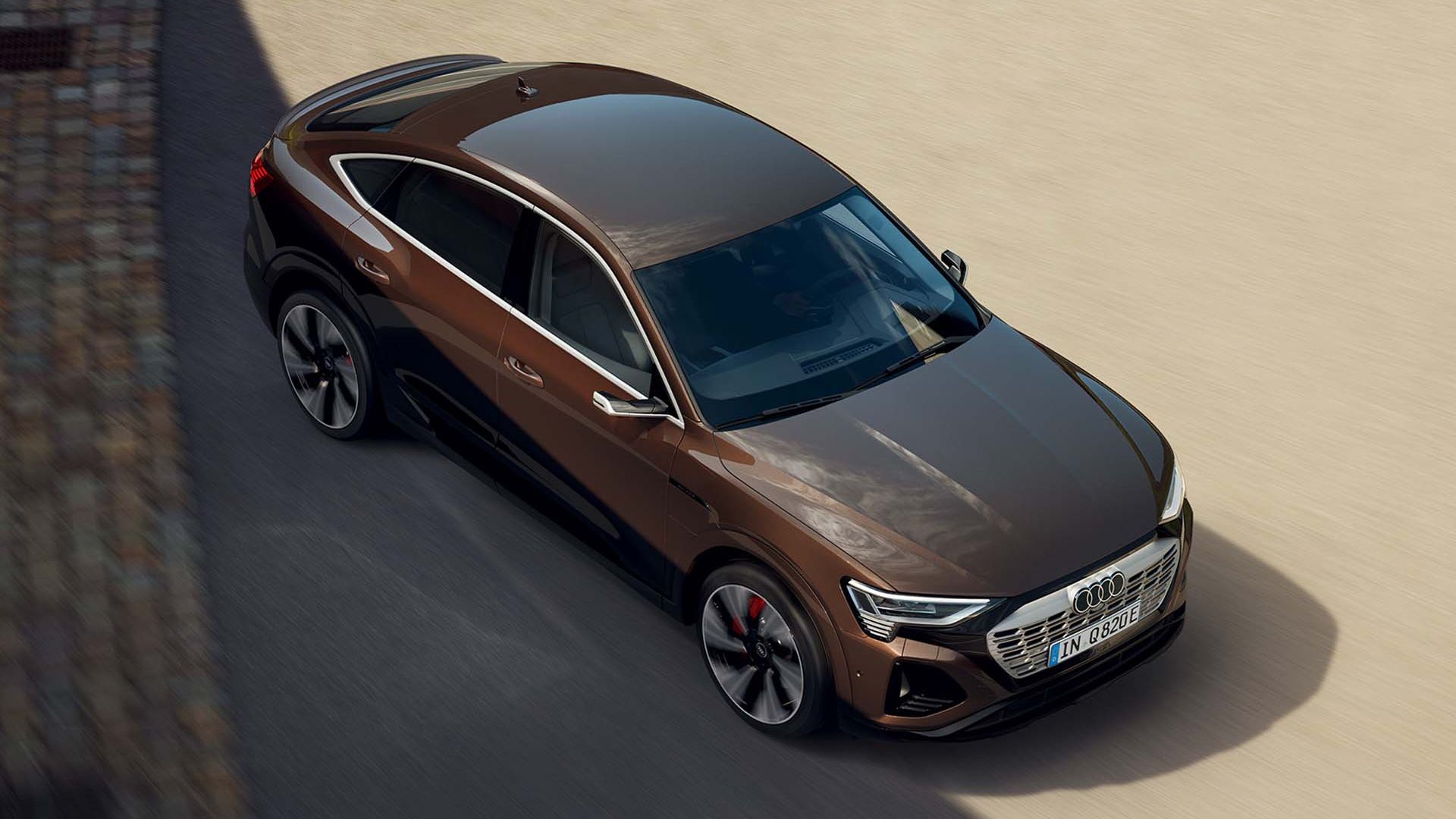


The range of electric cars
Are electric cars only suitable for short distances and not everyday use? In real-world conditions, your electric range will generally differ due to various factors which may have a positive or negative impact.
Read on for more on electric range.

What influences your driving range?
The range that can be achieved with an electric car depends on various factors, such as:
- Your personal driving style
- The driving profile (selected Drive Select mode)
- Traffic conditions and road surface
- Tyre pressure
- Weight of load and optional equipment fitted
- Auxiliary systems like air conditioning and heating
- Environmental temperature and weather
The top 3 influences on your range
Temperature
The chemical make-up of Audi e-tron model batteries means that it’s at its most efficient when outdoor temperatures are at around 20°C. This is because it operates best at its optimal temperature range (between 20°C and 30°C).
Air conditioning
Most auxiliary systems in a car require electrical power from the battery, with heating and air conditioning consuming the most energy on an electric vehicle. In fact, up to 30% of an electric car's mileage range can be used up in this way.
Driving profiles
Like a conventional combustion-powered car, the type of driving you'e doing, such as motorway or city driving, will affect its energy consumption, and therefore its range. More aggressive acceleration will consume larger amounts of battery power.

What is WLTP?
The WLTP is a new measuring procedure for determining the power consumption under the United Nations Economic Commission for Europe (UNECE).
The test environment
- Cars runs in an average speed of 33km/h; a condition tested by all manufacturers.
- Normally conducted in 23 degrees Celsius.
- Test based on City driving.
- Minimal load.


